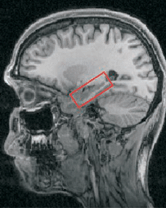Institutional Review Boards and Open Access Publishing
The New York Times has an article about whether the rules for Human Subjects protection, enforced by Institutional Review Boards, have in fact gone overboard (in terms of onerous regulations that protect no one):
As Ethics Panels Expand Grip, No Field Is Off LimitsOf course, those who conduct research with human participants, whether in the biomedical sciences, psychology, or sociology, should adhere to guidelines that protect the rights of the individuals involved, as outlined in The Nuremberg Code, the Declaration of Helsinki, and the Belmont Report. However, as nearly everyone in research can attest, having your project held up for months because of changes like this...
By PATRICIA COHEN
Ever since the gross mistreatment of poor black men in the Tuskegee Syphilis Study came to light three decades ago, the federal government has required ethics panels to protect people from being used as human lab rats in biomedical studies. Yet now, faculty and graduate students across the country increasingly complain that these panels have spun out of control, curtailing academic freedom and interfering with research in history, English and other subjects that poses virtually no danger to anyone.
The panels, known as Institutional Review Boards, are required at all institutions that receive research money from any one of 17 federal agencies and are charged with signing off in advance on almost all studies that involve a living person, whether a former president of the United States or your own grandmother. This results, critics say, in unnecessary and sometimes absurd demands.
Among the incidents cited in recent report by the American Association of University Professors are a review board asking a linguist studying a preliterate tribe to "have the subjects read and sign a consent form," and a board forbidding a white student studying ethnicity to interview African-American Ph.D. students "because it might be traumatic for them."
[NOTE: the example above was taken from an actual cover letter for a revised protocol.]
This brings me to the next topic (which is related, you'll see): Open Access Publishing, illustrated by such journals as the Public Library of Science family. The concept of making the results of publically funded research freely available to all is a worthy one. The idea of charging a taxpayer $39.00 to read an article important to her health such as this:
Ozanne EM, Annis C, Adduci K, Showstack J, Esserman L. (2007). Pilot trial of a computerized decision aid for breast cancer prevention. Breast J. 13: 147-54is an outlandish affront perpetrated by Blackwell Synergy, Elsevier, and other publishers (see press coverage).
This study sought to evaluate a shared decision-making aid for breast cancer prevention care designed to help women make appropriate prevention decisions by presenting information about risk in context. The decision aid was implemented in a high-risk breast cancer prevention program and pilot-tested in a randomized clinical trial comparing standard consultations to use of the decision aid.
One of the down sides of Open Access Publishing is the steep price that investigators must pay to publish their research. For instance, publication charges at PLoS Medicine (and others) are $2500! However,
We offer a complete or partial fee waiver for authors who do not have funds to cover publication fees. Editors and reviewers have no access to payment information, and hence inability to pay will not influence the decision to publish a paper.But who (at a major research university) wants to admit they can't afford to pay?
Another problem is the journal policy of wanting to obtain signed patient consent forms!! For example, this from PLoS Clinical Trials:
Protocol SubmissionThis stipulation is in express violation of the consent forms themselves! The forms typically have a lengthy confidentiality clause, and PLoS's request of viewing signed consent forms, which contain protected information (i.e., the participant's name), is not allowed! So presumably, here they mean just a blank copy of the form. However,
If authors have published their trial protocol in a peer-reviewed journal, then they should simply cite it in their submission to PLoS Clinical Trials. If the original protocol has not been published separately, it should be provided on submission, ideally uploaded through the electronic manuscript submission system, as a supporting file. The protocol need not include case record forms, patient information leaflets, or consent forms, although we (and reviewers) reserve the right to see patient consent forms in particular circumstances. Authors should also provide any subsequent amendments from the original protocol.
Our policy conforms to the Uniform Requirements, which states:Now this stipulation does require submission of signed consent forms. Of course, you don't want to go around publishing identifying information from your participants, but the way PLoS defines "complete anonymity" is rather liberal (e.g., "Patient X is a 53 year old male..." would be too specific).
"Patients have a right to privacy that should not be infringed without informed consent. Identifying information should not be published in written descriptions, photographs, and pedigrees unless the information is essential for scientific purposes and the patient (or parent or guardian) gives written informed consent for publication. Informed consent for this purpose requires that the patient be shown the manuscript to be published. Complete anonymity is difficult to achieve, and informed consent for publication should be obtained if there is any doubt. If data are changed to protect anonymity, authors should provide assurance that alterations of the data do not distort scientific meaning. When informed consent has been obtained it should be indicated in the published article."
In the unusual situation that a manuscript reports individual patient information that might potentially identify them, informed consent of the patient(s) will be required. Please use this form to obtain the patient's permission, and FAX to the PLoS UK office. PLoS Clinical Trials' open access license means that the images and text we publish online become available for any lawful purpose. This information should be conveyed when obtaining consent for publication from patients.
Any ideas or opinions on these matters?
Subscribe to Post Comments [Atom]

































